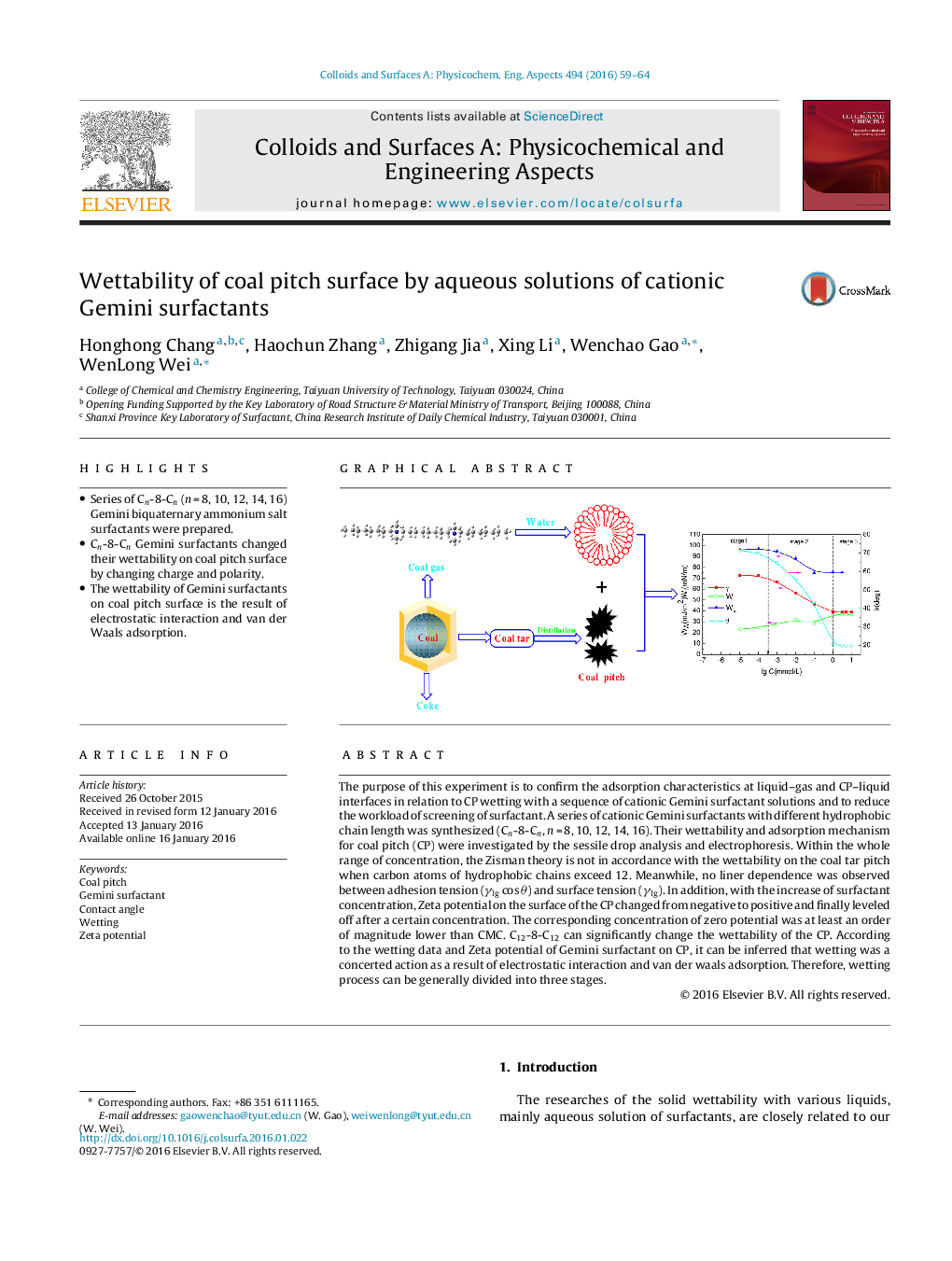| Article ID | Journal | Published Year | Pages | File Type |
|---|---|---|---|---|
| 591733 | Colloids and Surfaces A: Physicochemical and Engineering Aspects | 2016 | 6 Pages |
•Series of Cn-8-Cn (n = 8, 10, 12, 14, 16) Gemini biquaternary ammonium salt surfactants were prepared.•Cn-8-Cn Gemini surfactants changed their wettability on coal pitch surface by changing charge and polarity.•The wettability of Gemini surfactants on coal pitch surface is the result of electrostatic interaction and van der Waals adsorption.
The purpose of this experiment is to confirm the adsorption characteristics at liquid–gas and CP–liquid interfaces in relation to CP wetting with a sequence of cationic Gemini surfactant solutions and to reduce the workload of screening of surfactant. A series of cationic Gemini surfactants with different hydrophobic chain length was synthesized (Cn-8-Cn, n = 8, 10, 12, 14, 16). Their wettability and adsorption mechanism for coal pitch (CP) were investigated by the sessile drop analysis and electrophoresis. Within the whole range of concentration, the Zisman theory is not in accordance with the wettability on the coal tar pitch when carbon atoms of hydrophobic chains exceed 12. Meanwhile, no liner dependence was observed between adhesion tension (γlg cos θ) and surface tension (γlg). In addition, with the increase of surfactant concentration, Zeta potential on the surface of the CP changed from negative to positive and finally leveled off after a certain concentration. The corresponding concentration of zero potential was at least an order of magnitude lower than CMC. C12-8-C12 can significantly change the wettability of the CP. According to the wetting data and Zeta potential of Gemini surfactant on CP, it can be inferred that wetting was a concerted action as a result of electrostatic interaction and van der waals adsorption. Therefore, wetting process can be generally divided into three stages.
Graphical abstractFigure optionsDownload full-size imageDownload as PowerPoint slide
